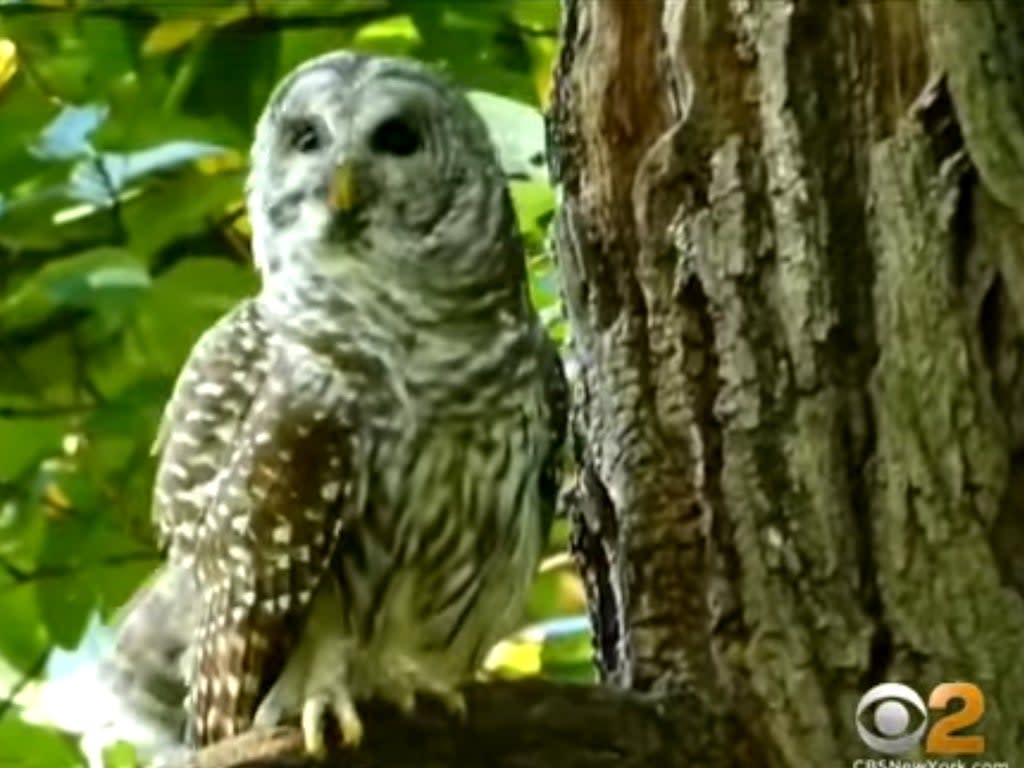Beloved Central Park owl Barry could have been killed with rat poison

Barry, an owl with a popular following in New York City that was killed in a collision with a vehicle last month, was reportedly contaminated by rat poison that could have impaired its flight.
The Barred owl, which was thought to be around a year old when it was killed in a collision with a maintenance vehicle in Central Park on 6 August, was said to have died after it “made contact” with the car.
A freedom of information request submitted by The City, a New York newspaper, revealed that Barry’s flight could have in fact been impaired by rat poison, it was reported on Monday.
Central Park officials said in an announcement at the time that Barry was “likely in search of a meal” and was “flying low” when it collided with the vehicle.
But veterinarians reportedly found “potentially lethal” amounts of rat poison in the owl’s body, which could have impaired its flight on the day it was fatally hit.
“The bromadiolone [rat poison] level is potentially lethal but it is unclear if it played a role in the death of this owl, i.e. was the anticoagulant affecting the owl’s ability to avoid collision with the vehicle?” the report allegedly asked.
The report by the state Department of Environmental Conservation also found traces of fish scales in the owl’s 2lb body, and said Barry was at risk of a “fatal haemorrhage” when it died because of the high levels of rat poison.
While the findings suggest a poisoning, the veterinarians also concluded that Barry died from “blunt force trauma” following the collision with a vehicle. It was not clear how the owl ingested the chemicals, or where.
Barry was also exposed to “multiple anticoagulant rodenticides, including brodifacoum, chlorophacinone, difethialone, diphacinone, and warfarin,” the report found.
According to The City, a rodenticide was last used in Central Park in July, although it is likely that residential and commercial buildings outside of the park use a number of chemicals.
Barry’s death saddened New Yorkers, many of whom visited the owl after it settled in a tree in Central Park last year during Covid.
The Central Park Conservancy, who run the park, told The Independent that its approach to pest management “prioritises prevention techniques and methods that reduce risks for the environment, wildlife, and people”.
“If there is a significant rat infestation in a specific area and non-pesticide interventions do not work, we administer bromadiolone and follow regulations, policies, procedures, and guidelines determined by the New York State Department of Environmental Conservation, the New York City Department of Health, and NYC Parks,” the conservancy added.
Read More
Unvaxxed Bolsonaro forced to eat pizza on New York sidewalk amid covid restaurant vaccination rules
California national park wraps ancient trees in foil as raging wildfire tears through forests
Biden to tell UN he doesn’t want new Cold War with China
NYC's Rikers Island jail spirals into chaos amid pandemic
Surge in demand for US trips after White House announces end to travel ban

 Yahoo News
Yahoo News 
